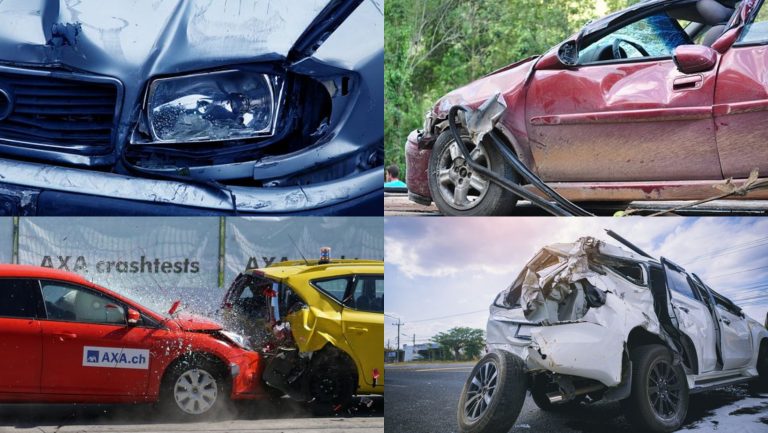9 Motorcycle Rules Every Newbie Rider Needs To Know

Now that you have your first motorcycle, you may want to go and have a fun ride. Right? Well, before you set out on your thrill ride, you should know a bike is just as dangerous as a car, if not more. Safe riding isn’t just about learning how to stay upright on two wheels. You need to practice safety tips each day you ride.
More often, you’ll see instances of vehicle collisions with motorcycles. Whenever this happens, you can dismiss it as negligence on either party. However, such accidents may be avoidable if one party knows safe riding rules.
This article seeks to highlight some basic safe riding rules before you saddle up. Some of these are unwritten rules that you may not get to learn at the riding school. Of course, to improve safety, you can look for more helpful hints to ensure you always ride safely.
1. Always Wear Protective Gear
No matter the weather, ensure you have proper safety gear before going for a ride, whether it’s a short distance or a long one. Your number one priority should be having a Department of Transport-approved helmet. A DOT-approved helmet can be your line between extensive head injury and just a scratch.
Further to that, the rest of your gear, too, should minimize injury in case of an accident. The safety gear can include rider gloves, rider jacket, rider boots, and knee guards, and should form part of your first shopping list. Each is as important as the other is. Remember, your denim isn’t safety gear because it’s not resistant to abrasion, and you’ll get hurt just as much.
2. Assume You’re Invisible
One of the basic road user knowledge is to act as the only sane user on the road. This is even true to practice when you’re riding a motorcycle. For your safety, don’t depend on the eye contact you make.
Some drivers can make eye contact and then do the exact opposite of what you expect. Such a situation can happen due to various reasons. Maybe, the driver was on the phone, was distracted, or just didn’t acknowledge your presence. Therefore, it pays if you take the precaution that no one sees you. This way, you can position yourself at a safe distance and avoid injury.
3. Be A Predictable Rider
When on the road, drivers expect certain movements on the road. While riding, you shouldn’t make sudden turns, or swerve from one lane to another. Such actions can result in accidents.
In addition to this, don’t hide in traffic. In short, if a driver can’t see you, your movements won’t matter. For example, if you put out a signal and you’re in a driver’s blind spot, the signal won’t affect your next action, causing a car to hit you.
4. Avoid Riding Behind A Heavy Truck
As a rule, give heavy trucks big space. Sometimes, the smallest incline can make a truck stall or rollback. There should be enough distance for you to react and avoid an accident when this happens.
5. Avoid The Middle Lane
It’s always dangerous riding on the freeways; as such, you should lower your injury risks to the bare minimum. One such way is by riding on the freeways’ far left or far right lanes. In so doing, you can only watch out for users in one lane.
Apart from looking out for one lane, it reduces the risk of you being in the blind spot of some drivers.
6. Know The State Laws
Make it a priority to know and understand laws governing motorcycles in your state. This can help you avoid getting a ticket due to ignorance. If you plan to ride across state lines, you also need to familiarize yourself with the other states’ laws. The reason is that no two states can have the same laws, and you can’t assume so.
7. Always Check Your Motorcycle

For your safety and proper care of your bike, know what to check daily and after every ride. For example, check chain tension, mirrors, bolts, nuts, blinkers, and tire pressure.
Similarly, you should check for fluids and change the oil per the manufacturer’s recommendation.
8. Check Forecasts
When planning for a ride, check the weather and choose a time that doesn’t have adverse conditions. Always remember that poor visibility almost doubles your risk of accident when on a motorcycle than when in a car, not to mention the chances of hydroplaning if it rains or there’s ice on the road.
9. Check Your Insurance Policy
To begin with, you should ensure you get insurance cover as a motorcycle owner. After which, know what your insurance policy covers. For example, check if it’s a third-party policy or a comprehensive one.
Conclusion
For most, riding a motorcycle is fun and provides the thrills. However, the fun can turn tragic without following some basic riding ethics. After reading the pointers in this article, you can now practice them, and each day, your ride can be safer.
To conclude, you need to know that you should replace your helmet if you’ve had knocks on it through falls. Even if you haven’t had an accident, the helmet degrades over time, and its safety levels decrease.






